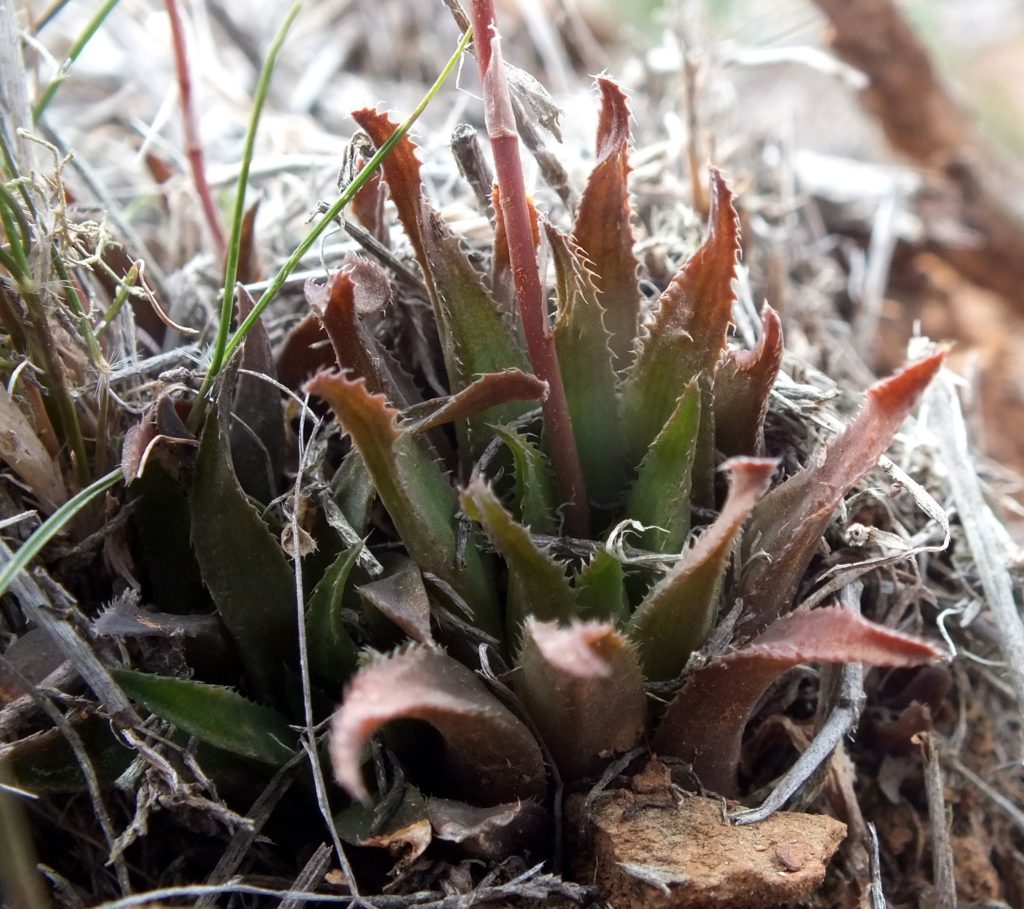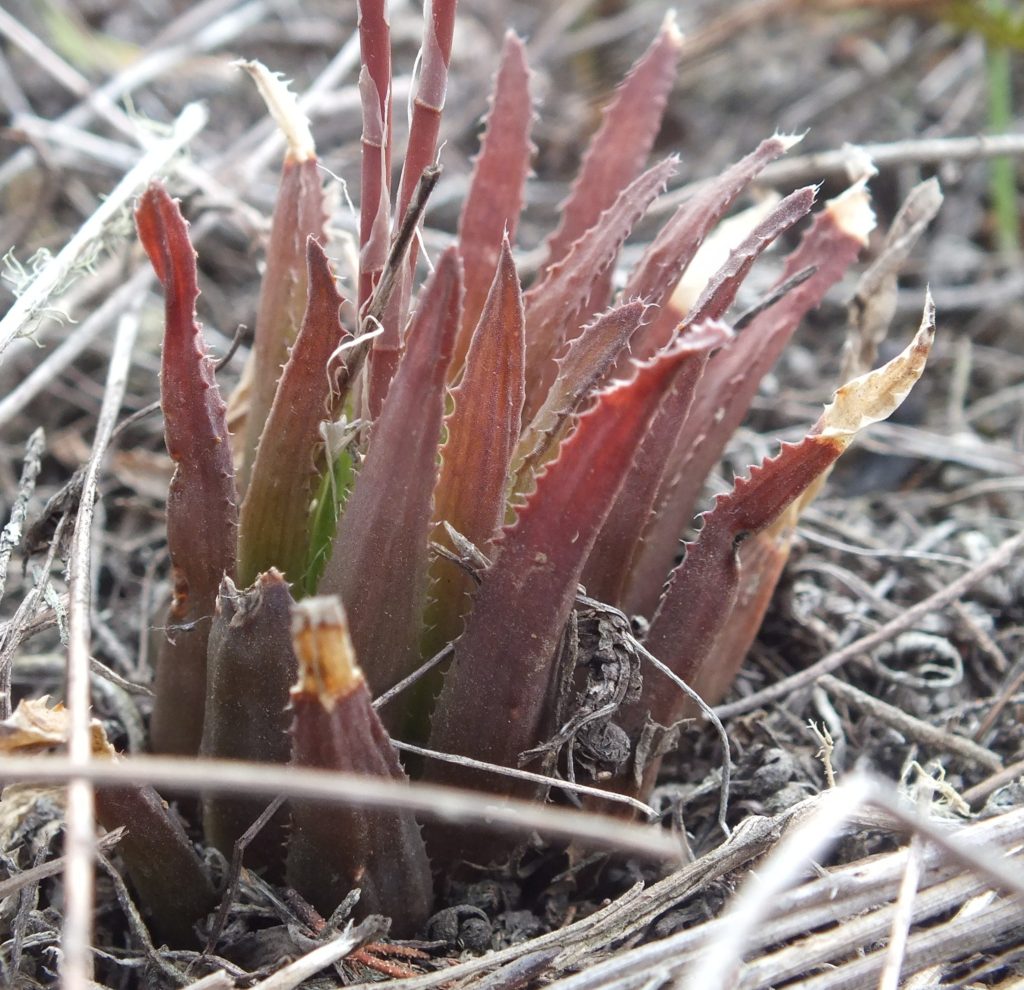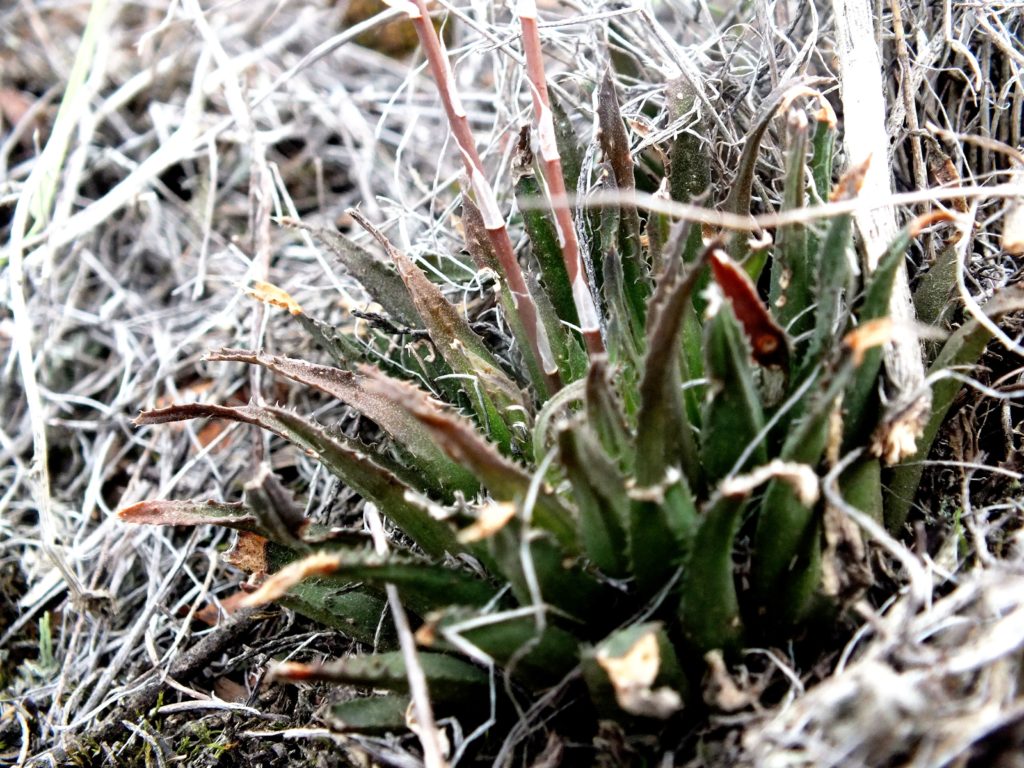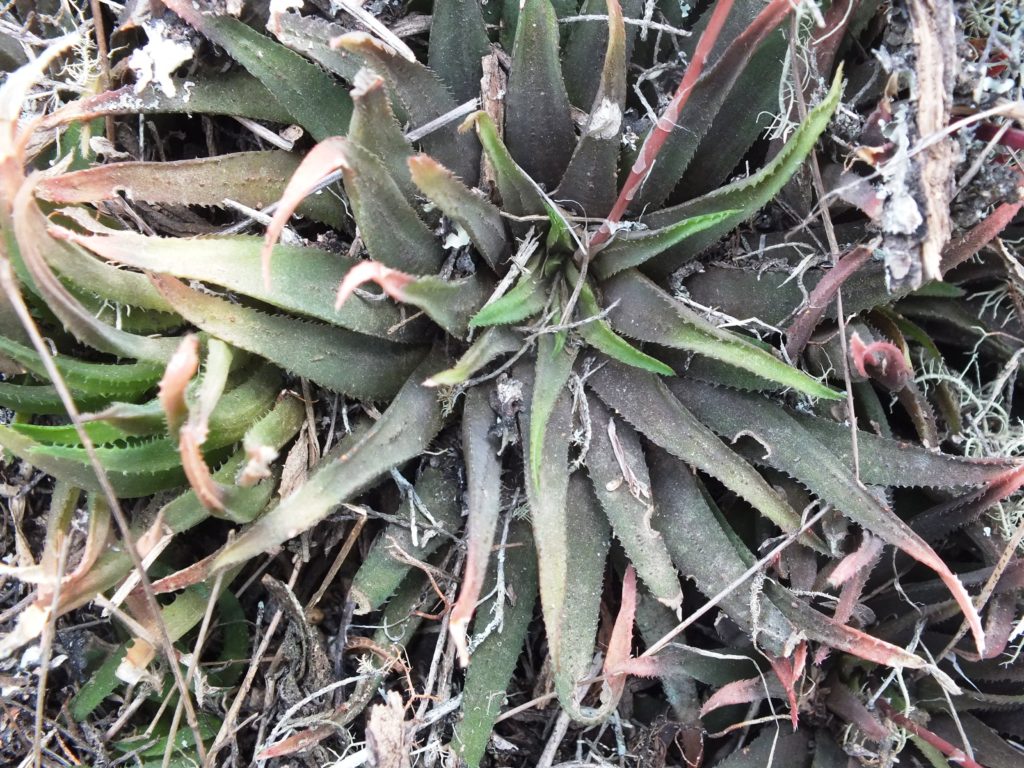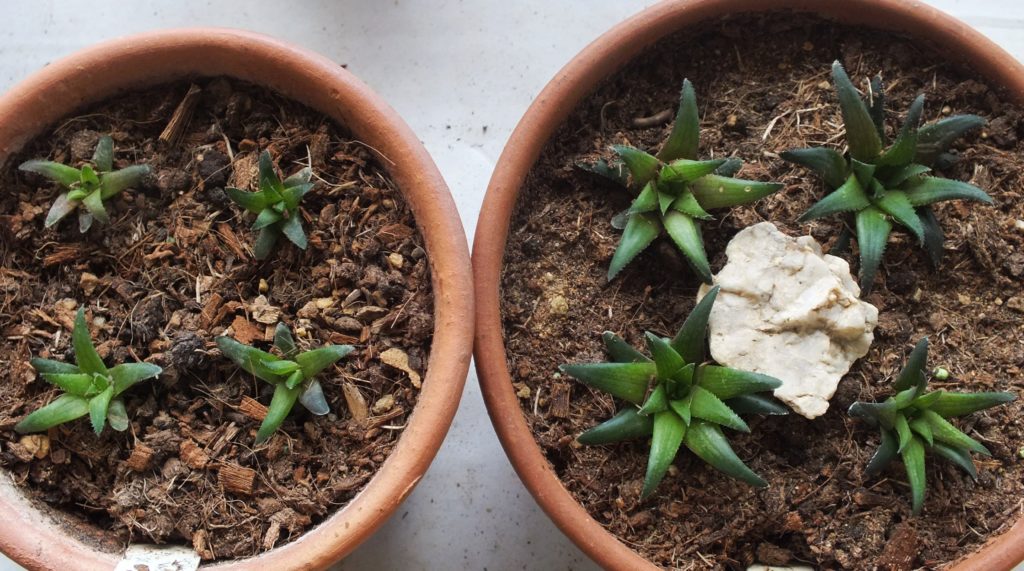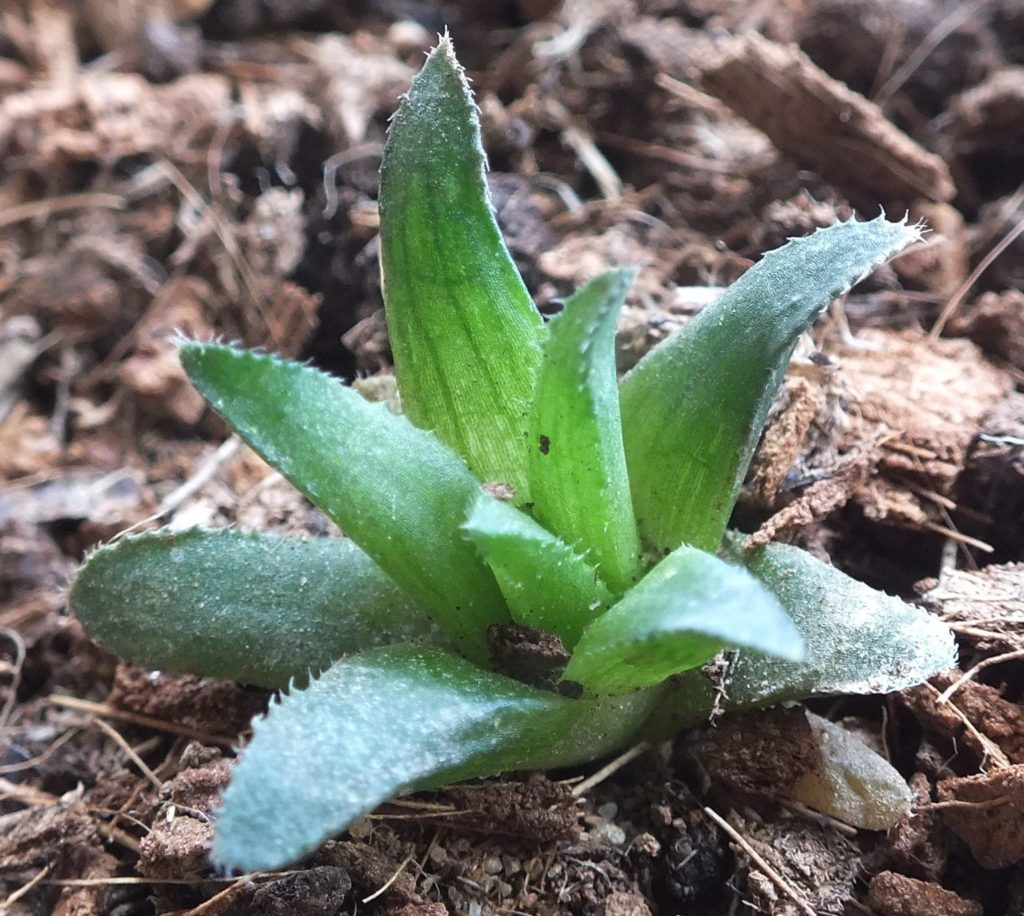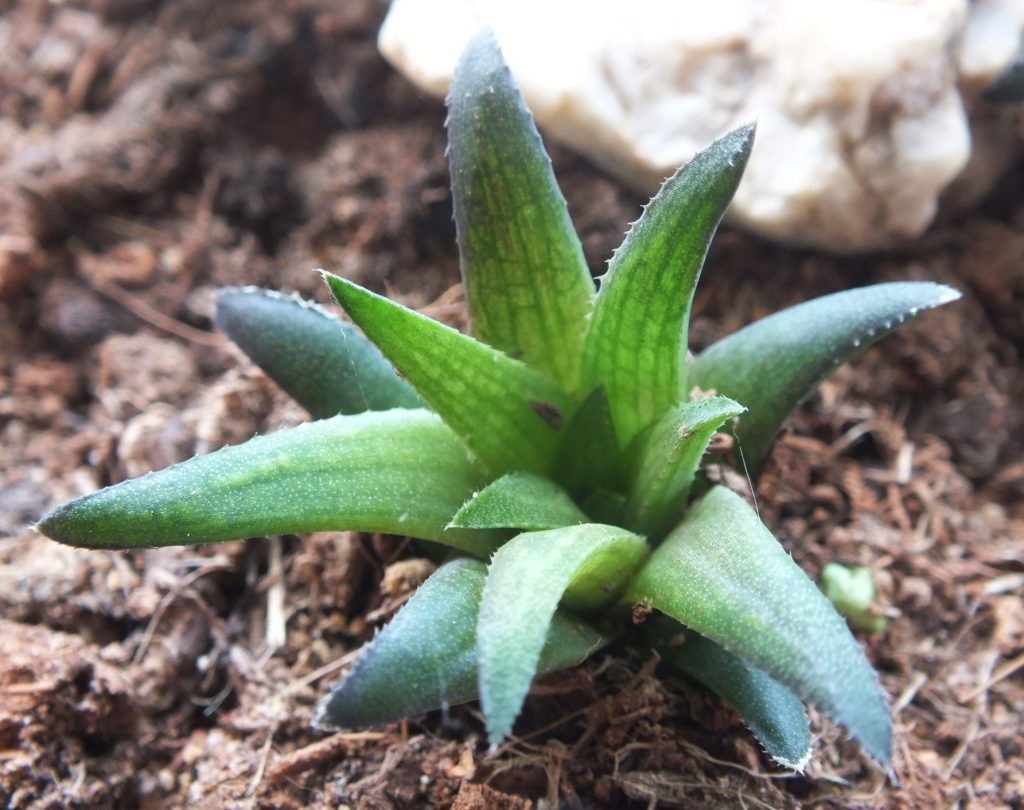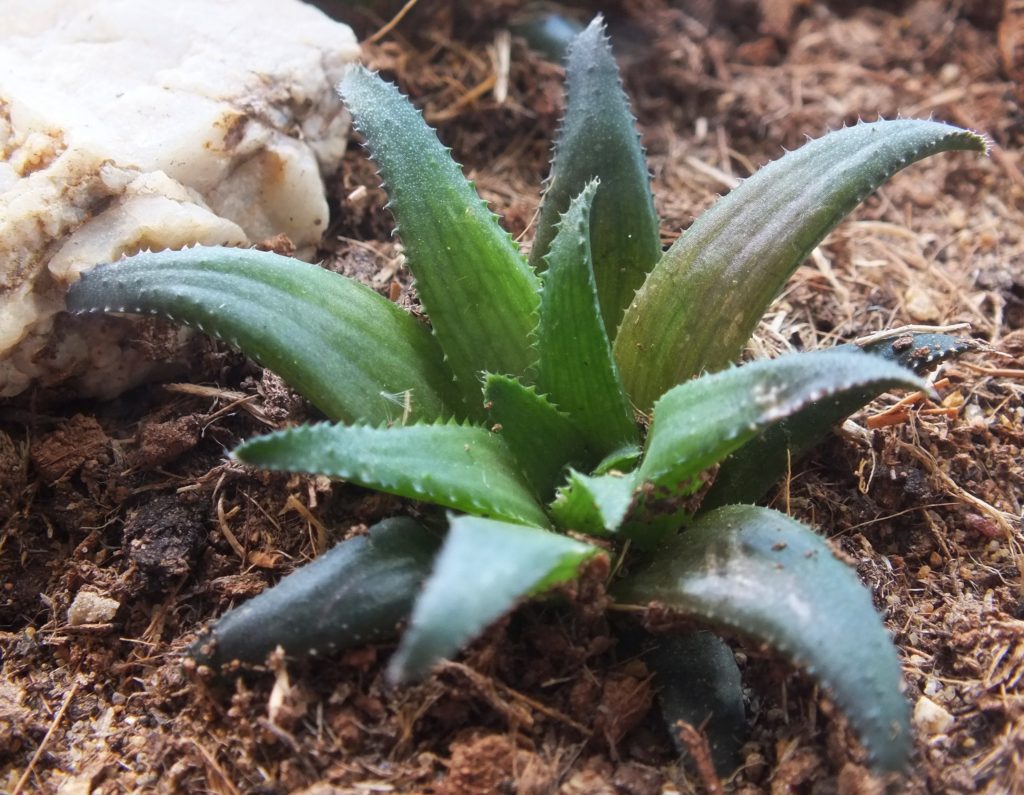Haworthia chlorocantha is a name I use to cover a whole hoard of populations of plants that occur in the Southern Cape south of the Langeberg mountain range between George and Albertinia. Of course, as is the despairing fact in Haworthia, the plants in the different populations or even within populations, often do not look the same at all. It is only from a distance and from an overview of all the available (note ”available” – to me?) evidence, that I concluded that there are two sets of plants in the area. One is the group that I refer to as the Retusoids. It comprises H. retusa (=H. turgida), H. mirabilis, H. pygmaea, H. mutica and H. emelyae), although technically only H. pygmaea and “H. turgida” are in the designated area. The other group is the floribundoids that are H. floribunda, H. chlorocantha, H. parksiana, and H. variegata. Quite rightly and understandably, opinions about this as regards species names, differ humungously. I can only explain what my experience and information suggest. I lump the names like this because there are undeniable problems about regarding them as made up of different as fully and clearly different systems we like to name as species. Furthermore I must add that the problem is compounded when one is faced with the reality that for example H. floribunda, interacts in the field with the retusoids as well as with its fellow floribundoids.
Here I would like to just show and discuss one population of Haworthia chlorocantha that I recently came across east of Albertinia in a twilight zone where its relationship to H. floribunda is questionable. I also grew plants from seed and I will show what they look like after two years. This is particularly interesting because Essie Esterhuizen has done some remarkable Haworthia exploration over the last 40 years and commented to me upon his inability also to not find any real dramatic and clear differences within the same two groups I mention. His is a totally independent observational route to my own and he might well express his thoughts quite differently and understandably even choose to do so. Unfortunately I just do not have a picture record of all the Haworthia chlorocantha populations (and of course the others too) that I have personally seen. I would so like enthusiasts to have that available to them. So this short essay is restricted to just this one single locality and disregards others.
I have not even allocated an accession number to this population north east of Albertinea along the Valsch river. There is another even more complex population still further east that Etwin Aslander found and on which I commentated on in my Haworthia Updates. My first five figures are of adult plants in a small localized population occupying about 15sq m in Renosterveld. As you can see the plant are quite variable and there is undoubtedly I floribunda similarity in the leaves. Thinking that maybe flower characters may hold some significance is just a joke as I explained in Vol 8 of Updates. This applies nearly equally to flowering time that is March for this population.
Fig. 6 is of two pots of seedlings. Repotted at one year, they separated into two size groups. This is in itself an indication of internal population difference and my personal experience of growing these Haworthias from seed is that there is a natural inclination to first pick out the more robust seedlings and work down to the small weakest, sometimes even discarding the last! Even in this case I have discarded seedlings. What did I lose? So at two years we have a pot with 4 plants in the size range of diameter spread up to 4.5cm (figs. 7 and 8) and another pot with the spread up to only 3.5cm (fig. 9 showing a plant with a 2cm leafspread. There are differences in colour and leaf spination. With active growth in shadow, the leaves are recurved. Some of the leaves show the characteristic twisted and rounded tips of H. floribunda. The smallest plant is indicative of the H. parksiana-like size that suggests the same thoughts of species similarity that come to mind when exploring other populations.
published in Haworthiad v36.1 pp 14-16, February 2022 ♦

